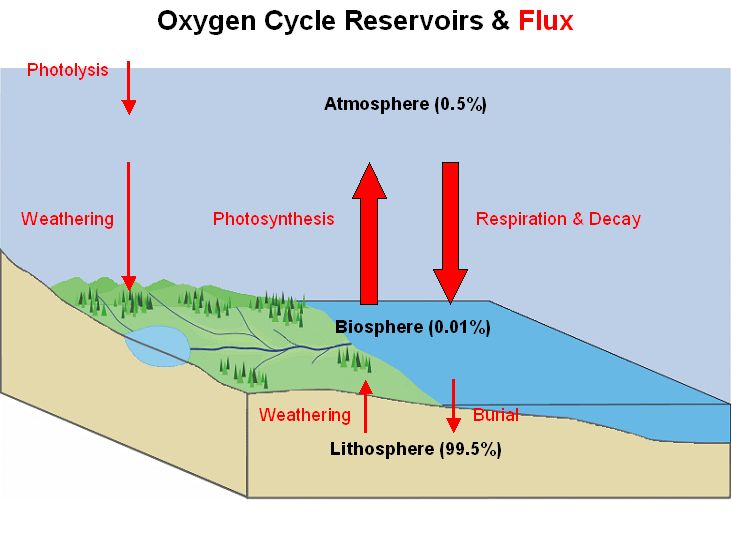Soil Restoration Meaning, Principle, and Types Fully Explained
Soil restoration (alternatively called soil rehabilitation, soil regeneration, soil reclamation or soil remediation) is the use of various techniques to restore, remediate and enhance the quality of soil [4]. This article discusses soil rehabilitation meanings, principle and types, according to the following outline;
-Soil Restoration Meaning: 11 Ways to Define Soil Restoration
-Principle of Soil Restoration: How Soil is Restored
Soil Restoration Meaning : 11 Ways to Define Soil Restoration
Soil restoration is the process of improving the overall quality of soil by the use of various techniques.
The process of restoring soil affects multiple characteristics of soil. Some of these are highlighted in the following definition;
Soil restoration is the use of sustainable methods and techniques to improve the physical structure, biochemical composition and biological equilibrium of soil [3].
The above definition highlights the role and importance of techniques and methods in the practice of soil rehabilitation. These methods are further highlighted in the following definition;
Soil rehabilitation is the process of improving overall soil quality by the use of methods like integrated management, regenerative grazing, land farming, cover cropping, composting and crop rotation to optimize physical, chemical and biological attributes of soil.
The concept of environmental remediation is closely related to soil rehabilitation [2]. This is shown in the definition below;
Soil rehabilitation is a regenerative process whereby soil which has been degraded is recovered or enhanced through environmental remediation with the removal of contaminants like heavy metals, pesticides, hydrocarbons and radioactive materials.
Environmental degradation is another factor of relevance in the restoration of soil. This is shown in the following definition;
Soil rehabilitation refers to the implementation of various conservative and rehabilitative methods to reverse the effects of environmental degradation on soil, and improve soil quality.
Another context within which soil rehabilitation may be defined, is the context of soil conservation.
Soil restoration is the process of enhancing the quality of soil while protecting against degradation and loss, through soil conservation practices like crop rotation, cover cropping, no-till farming, and terrace farming.
The physical changes that occur in soil, in the process of restoration, are very crucial in determining the degree of enhancement of soil quality. Some of these physical change factors are mentioned in the following definition;
Soil restoration is the process by which soil characteristics like compaction, porosity, permeability and moisture content are optimized, to improve the overall quality of the soil.
One of the objectives of restoring soil is to ensure that soil processes and uses do not negatively affect the ecosystem. This is expressed as follows;
Soil rehabilitation is the use of sustainable methods to ensure that soil use; quality and processes are aligned with natural ecologic conditions in the ecosystem.
As part of efforts to align with natural ecologic conditions and conserve the environment, restoration of soil includes carbon storage or sequestration;
Soil restoration is the remediation and enhancement of soil characteristics and composition, and the sequestration of carbon from biomass in soil, so as to reduce the risk of greenhouse emission, global warming and climate change [6].
No-till farming is one of the sustainable methods by which carbon is sequestered in soil [9].
Public health and safety are both impacted by soil rehabilitation . This fact is expressed as follows;
Soil rehabilitation is the use of sustainable agriculture, soil treatment and conservation to mitigate health and safety risks associated with soil degradation.
Lastly, soil rehabilitation may be defined with regards to agricultural productivity;
Soil rehabilitation is the process of regenerating soil composition, nutrients and ecological characteristics while reducing erosion, leaching and other forms of degradation, thereby increasing soil fertility, quality and agricultural productivity.
Principle of Soil Restoration: How Soil is Restored
Soil is restored by appraisal, selection, implementation and monitoring of suitable restoration techniques.
The principle of soil restoration is therefore based on the four-step process of appraisal, selection, implementation, and monitoring. These steps are discussed as follows;
1). Appraisal
Appraisal is also known as investigation, assessment (Environmental Impact Assessment; EIA), analysis or reconnaissance study.
It is the preliminary study of the site where soil reclamation is to take place.
During appraisal, information is collected which will be helpful in selecting the methods and materials that are best for the reclamation process on that particular site.
Some factors which may be considered are soil type, climatic conditions, drainage, type of degradation and severity of degradation.
When selecting materials and methods, the technical feasibility and cost of using these must be put into consideration [1].
2). Selection
Based on information that is collected during assessment of the site, the materials, equipment and methods which will be most effective to address the problem can be selected.
When these options have been selected, a soil rehabilitation plan is designed. The plan is basically a detailed scheme outlining the timeline, approach and procedure of the restoration project.
Careful selection is very crucial to the success the entire project. In addition to identifying the best approach, it must also take into account the limitations and possible setbacks of the process, and how these challenges can be addressed.
3). Implementation
After selection has been completed and the project plan has been designed, execution or implementation follows.
This is the main stage of actual soil rehabilitation. During implementation, the decisions which have been made from appraisal and selection are used to guide the actions and procedure of soil remediation and rehabilitation.
Decision-making also occurs during implementation, especially when there is need to address a flaw or limitation in the original plan, or to solve an unexpected problem.
4). Monitoring
During and after soil rehabilitation procedures have been implemented, it is usually necessary for close monitoring of the site to be performed [5].
Site monitoring helps with keeping track of progress in terms of the degree of improvement of the soil. It helps to analyze the effectiveness and suitability of various methods and materials to solve specific degradation problems, under specific ecologic conditions.
Through close monitoring, the site can be rehabilitated to reach its full potential in quality and fertility.
Types of Soil Restoration
Types of soil restoration are fertility restoration, structural restoration, compositional restoration and quality restoration.
These types are distinguished based on the specific attributes that are being restored. Each of them is discussed below;
1). Restoration of Soil Fertility
Fertility Enhancement is one of the most important types of soil restoration.
This is because fertility is an indicator of soil health, and determines the productivity of soil.
There are two main methods for improving soil fertility. These are direct nutrient-supply, and organic matter rebuilding [7].
In direct nutrient supply, fertilizers (organic and inorganic) are applied to soil, thereby replenishing and supplementing nutrients that have been depleted through agriculture, soil erosion, leaching and other causes.
In organic matter-rebuilding, the goal is to improve soil quality by rebuilding its organic content. This can be achieved using soil conservation and sustainable agricultural practices like cover cropping, crop rotation and composting to supply biomass to soil.
When this biomass breaks down through biodegradation, nutrients are released into the soil. Organic matter rebuilding also helps to grow the population of macro and micro-organisms in soil, which are useful to improve soil structure and composition.
Restoration of soil fertility makes soil more valuable, as it is capable of yielding significant amounts of agricultural products.

2). Restoration of Soil Structure
Soil structure plays an important role in controlling the agricultural productivity as well as composition of soil [8].
Degradation of soil through agricultural activities, industrial processes and natural phenomena, often alters soil structure. The result of this is a change in physical characteristics like moisture content, density and particle size. Such changes are often unfavorable and may limit the productivity and quality of the soil.
Some terms used to describe soil structure restoration include soil rebuilding, top soil restoration and soil building.
In soil building, the objectives include to recover soil that has been lost through erosion and other processes, and to rehabilitate and improve the structure of the soil, as well as its carbon content.
Biological methods are fairly effective for restoring soil structure. The roots of some trees, shrubs and cover crops help to promote soil structural integrity, while organic fertilizer can facilitate biological processes in soil which may in turn improve structure.
Soil structure restoration also involves the reversal of compaction caused by human activities in agriculture and urbanization. Loosening of compacted soil helps in returning it to its optimal structural condition.
3). Restoration of Soil Composition and Quality
Soil Quality Restoration (SQR) is an overall improvement of soil physical, chemical and biological health [4].
Basically, soil quality restoration is the overall result of all types of soil rehabilitation. It indicates that efforts to rehabilitate and enhance the characteristics of soil have been effective.
Aspects and indicators of soil quality restoration are de-compaction, organic matter rebuilding, soil building and recovery, and nutrient replenishment.
Conclusion
Soil restoration is the process of rehabilitating and improving soil structure, fertility, productivity, organic content, and overall quality.
Soil is restored by appraisal of a site; selection of a suitable approach, implementation of the selected approach, and monitoring of the results.
The principle of soil rehabilitation is therefore based on a four-stage process that comprises of;
- Appraisal
- Selection
- Implementation
- Monitoring
Types of soil rehabilitation are;
- Restoration of Soil Fertility
- Restoration of Soil Structure
- Restoration of Soil Composition and Quality
References
1). Bardos, P.; Nathanail, J.; Pope, B. (2002). “General principles for remedial approach selection.” Land Contamination & Reclamation 10(3). Available at: https://doi.org/10.2462/09670513.614. (Accessed 21 July 2022).
2). Bini, C. (2011). “From soil contamination to land restoration.” Available at: https://www.researchgate.net/publication/286338846_From_soil_contamination_to_land_restoration. (Accessed 21 July 2022).
3). Lacalle, R. G.; Becerril, J. M.; Garbisu, C. (2020). “Biological Methods of Polluted Soil Remediation for an Effective Economically-Optimal Recovery of Soil Health and Ecosystem Services.” Available at: https://doi.org/10.26502/jesph.96120089. (Accessed 21 July 2022).
4). Lal, R. (2015). “Restoring Soil Quality to Mitigate Soil Degradation.” Sustainability 7(5):5875-5895. Available at: https://doi.org/10.3390/su7055875. (Accessed 21 July 2022).
5). Menta, C., Conti, F. D.; Pinto, S.; Leoni, A.; Lozano, C. (2013). “Monitoring soil restoration in an open-pit mine in northern Italy,” Applied Soil Ecology. Available at: https://doi.org/10.1016/j.apsoil.2013.07.013. (Accessed 21 July 2022).
6). Montiel-Rozas, M. M.; Panettieri, M.; Madejón, P.; Madejón, E. (2015). “Carbon Sequestration in Restored Soils by Applying Organic Amendments.” Land Degradation and Development 27(3):n/a-n/a. Available at: https://doi.org/10.1002/ldr.2466. (Accessed 21 July 2022)..
7). Omotayo, O. E.; Chukwuka, K. S. (2009). “Soil fertility restoration technique in sub-Saharan Africa using organic resources.” African Journal of Agricultural Research 4(3):144-150. Available at: https://www.researchgate.net/publication/228649185_Soil_fertility_restoration_technique_in_sub-Saharan_Africa_using_organic_resources. (Accessed 20 July 2022).
8). Peng, X.; Horn, R.; Hallet, P. D. (2014). “Soil structure and its functions in ecosystems: Phase matter & scale matter.” Soil and Tillage Research 146. Available at: https://doi.org/10.1016/j.still.2014.10.017. (Accessed 20 July 2022).
9). Reicosky, D. (2008). “Carbon sequestration and environmental benefits from no-till systems.” Available at: https://www.researchgate.net/publication/43290480_Carbon_sequestration_and_environmental_benefits_from_no-till_systems. (Accessed 21 July 2022).





